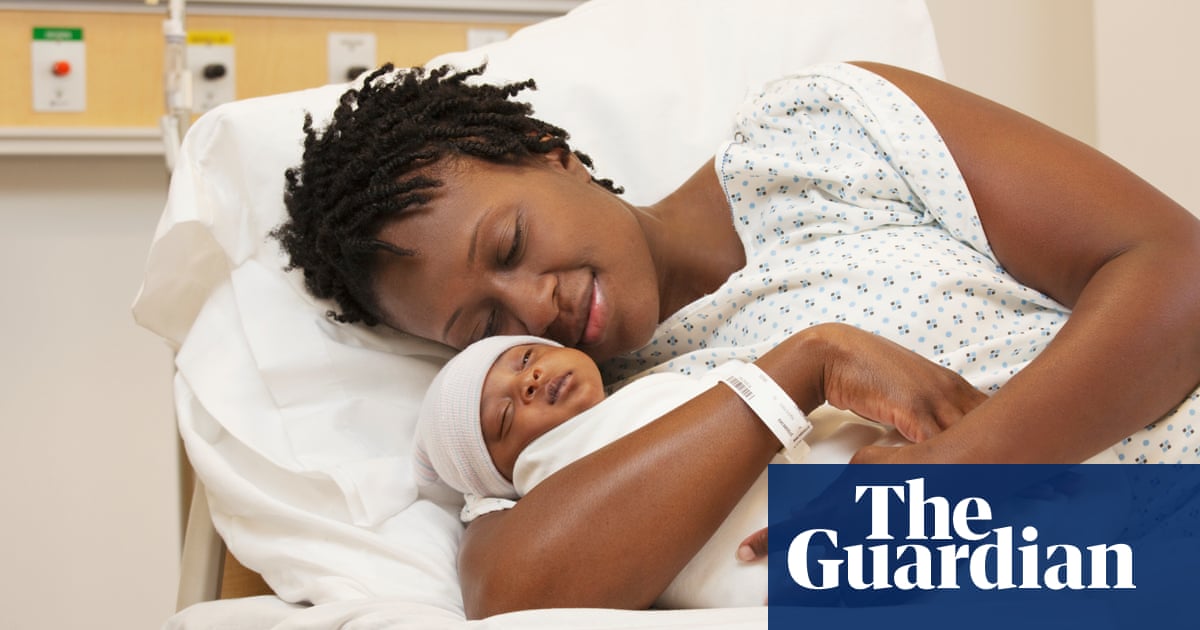
Black babies in England are almost three times more likely to die than white babies after death rates surged in the last year, according to figures that have led to warnings that racism, poverty and pressure on the NHS must be tackled to prevent future fatalities.
The death rate for white infants has stayed steady at about three per 1,000 live births since 2020, but for black and black British babies it has risen from just under six to almost nine per 1,000, according to figures from the National Child Mortality Database, which gathers standardised data on the circumstances of children’s deaths. Infant death rates in the poorest neighbourhood rose to double those in the richest areas, where death rates fell.
The mortality for Asian and Asian British babies also rose, by 17%.
The annual data shows overall child mortality increased again between 2022 and 2023, with widening inequalities between rich and poor areas and white and black communities.
Most deaths of infants under one year of age were due to premature births. Karen Luyt, the programme lead for the database and a professor of neonatal medicine at Bristol University, said many black and minority ethnic women were not registering their pregnancies early enough and the “system needs to reach them in a better way”.
“There’s an element of racism and there’s a language barrier,” Luyt said. “Minority women often do not feel welcome. There’s cultural incompetence and our clinical teams do not have the skills to understand different cultures.”
The figures showed that 50 more black babies died in the year to April 2023 than in the previous year.
Labour said the “stark racial disparities” in the changing mortality rates were “scandalous”. “Labour will work to close this shocking gap, and to close racial disparities across our health service, with a new Race Equality Act,” said Anneliese Dodds, the shadow women and equalities secretary.
The Race Equality Foundation described the figures as “shocking, but devastatingly … not surprising”. A spokesperson said: “We have known for some time that maternity care and mortality rates for Black, Asian and minority ethnic women and children are far higher than for the rest of the population. Without leadership in health institutions and a real desire for change, more infants will die.”
Overall, the rate of deaths of children aged from birth to 17 is now at its highest level since the database launched in April 2019. The highest death rate for those over a year old continued to be for children aged between 15 and 17. There was also a second consecutive increase in death rates among babies under one year of age.
“If child mortality is going up, it means the health of our children is deteriorating,” said Luyt. “This is just the tip of the iceberg.”
In more than a quarter of the deaths reviewed in the last year, expert panels identified achievable interventions that could reduce the risk of future child deaths. The proportion of deaths that could be avoided in future by doing things differently has increased.
In 29% of all deaths reviewed, the children were or had been known to social care services, up from 24% in 2020.
“There is evidence here that we can change this,” Luyt said. “We know that interventions can reduce child mortality and now need to implement things that we know work.”
She said that was not happening currently because “our health systems are under extreme duress after the pandemic, a third of children are living in poverty and families are fighting to survive”.
A Department of Health and Social Care spokesperson said: “Maternity care must be the same high standard for everyone. In March, NHS England published its three-year plan for maternity and neonatal services which sets out how it will make maternity and neonatal care safer, more personalised, and more equitable for women, babies, and families.
“NHS England has also published guidance for local maternity systems, supported by £6.8m, focusing on actions to reduce disparities for women and babies from ethnic minorities and those living in the most deprived areas.
“Alongside this, we have set up the maternity disparities taskforce which brings together experts from across the health system, government departments and the voluntary sector to explore and consider evidence-based interventions to tackle maternal disparities.”












